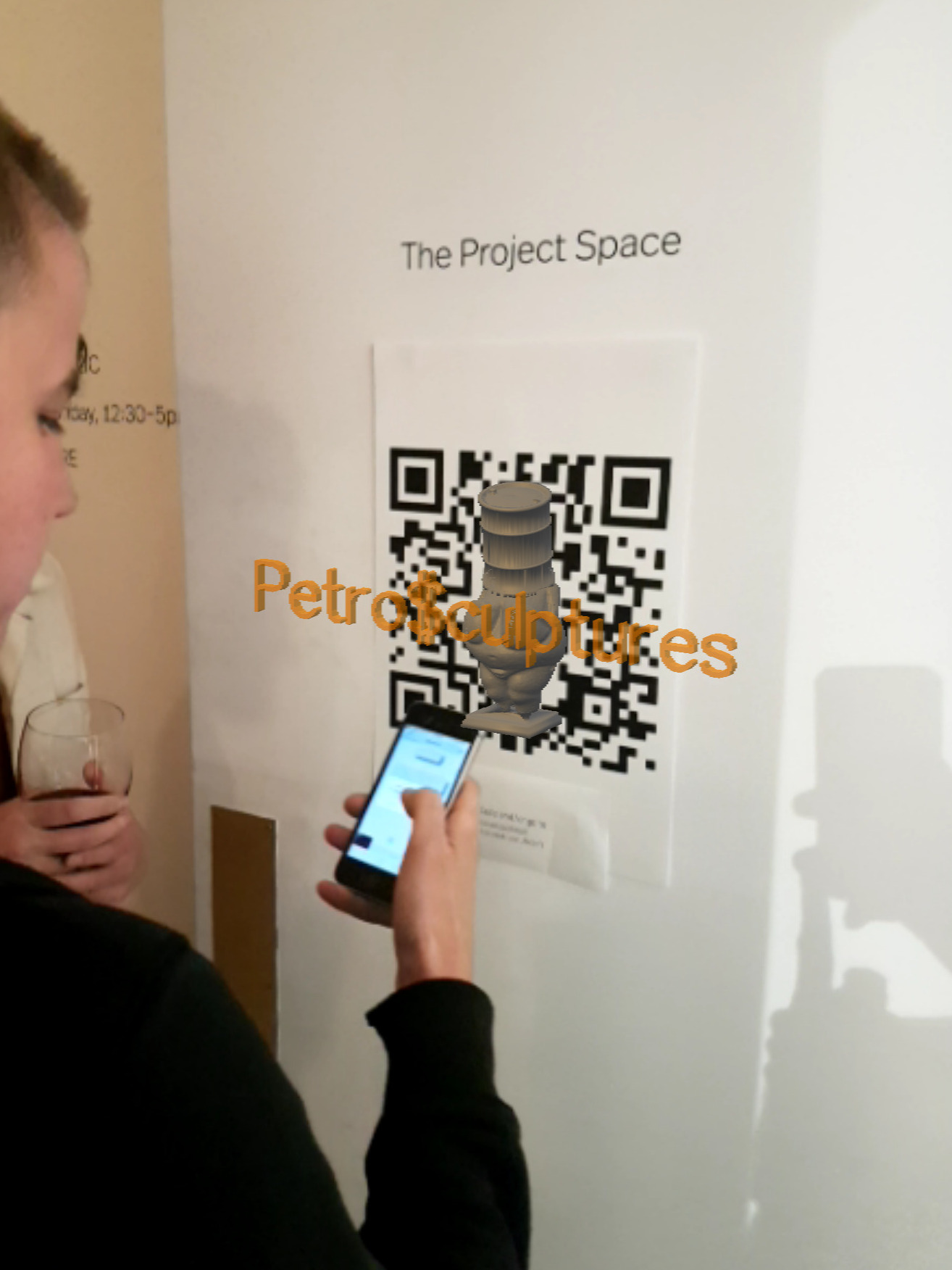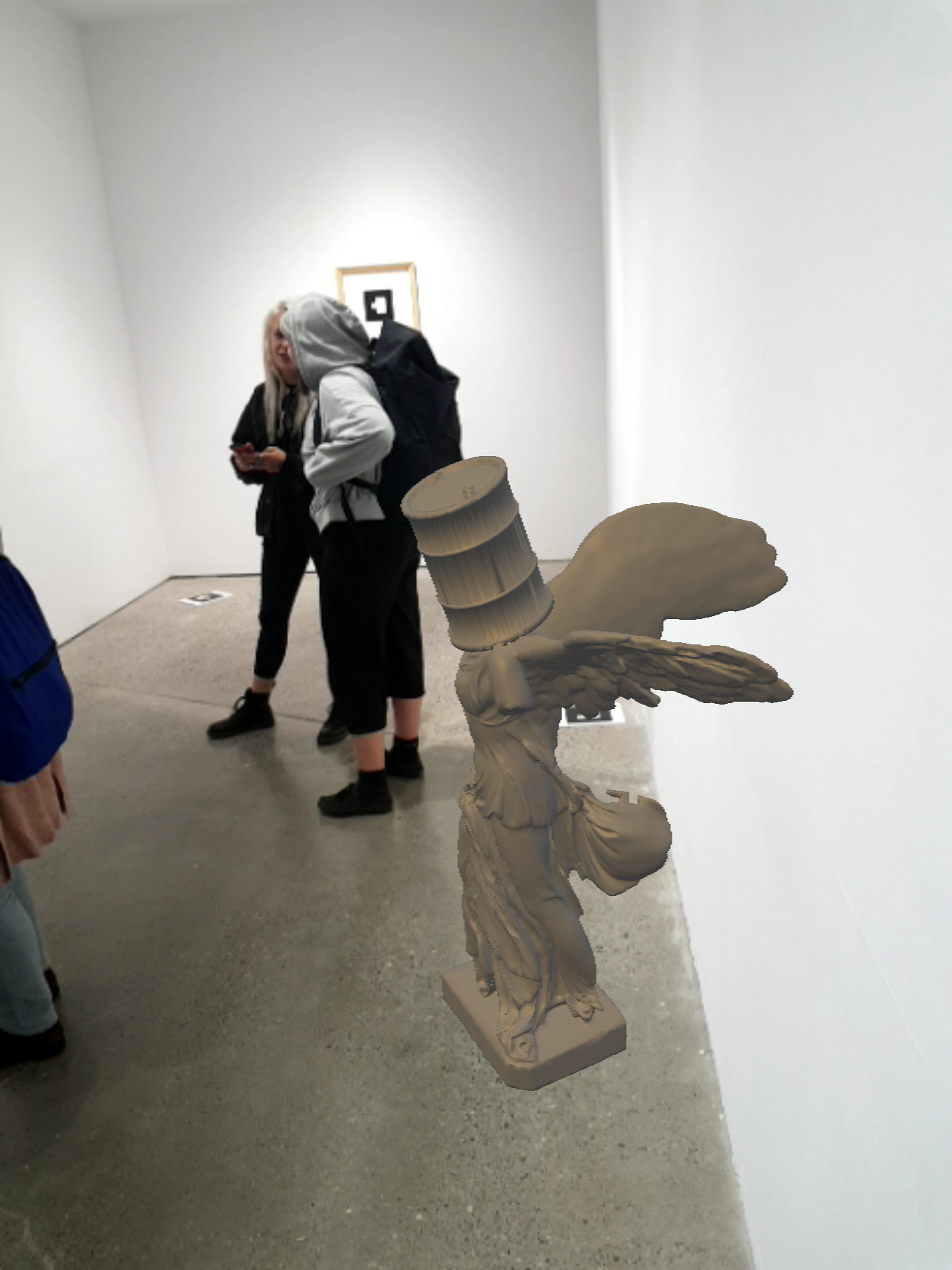Petro $culptures / Petro cultures
A series of virtual and real mash-up sculptures (2019)



ARxhibiT is a pop-up augmented reality exhibition format based on open WebVR technologies: No app installs, no proprietary licenses - just scan the QR code or pop in the URL, and you are ready to go and hit the markers.
Petro/cultures / Petro$culptures is its first show. It features a virtual sculpture garden full of art histories’ classics blinded by their culture’s addiction to fossil fuels (and other hazardous material).
The science of global warming caused by burning fossil fuel is settled for nearly half a century, but that hasn’t kept our society from burning through megatonnes of oil, gas, and coal.
We know who is responsible. We still blindly follow our leaders along, stumbling like drug addicts on their way to the dealers. The difference to drugs is We - at least try to - put the drug lords and dealers in prison, while our oil lords continue to make politics and enormous profits. Meanwhile, we know it’s is just 100 companies that are directly responsible for 71% of all cumulative greenhouse gas emissions since 1981.
We know it is a social and not a technological problem. Those who cause the mess are also the most capable of adapting, migrating, and laundering their dirty past, money, and energy. The victims of the new age never had a choice anyway. The Western mindset colonizes and exploits nature and people alike.
We know what to do. And we know there is no green-washing about it: we know this comes with massive changes to our lifestyles and infrastructure, and not just replacing technologies with technologies. We know for the world to stay the same (meaning as liveable as it is right now), everything has to change.
The prominently featured 55-gallon drum (also known as the 200-liter drum, or as the 44-gallon drum in Britain) is a cylindrical container typically made of steel. They are commonly used for transporting oils, fuels, chemicals, dry goods - often hazardous materials. The use of 200-liter drums - like so many other things - is a legacy of war machinery. It became widespread in World War II. In the past, hazardous waste was often placed in drums of this size. Over time, some drums would corrode and leak. As a result, these drums have become iconic for pollution problems.
Michael Aschauer, Banff, 2019
developed during a residency at the by Banff Centre for Arts and Creativity provided by BMKOES






see also: